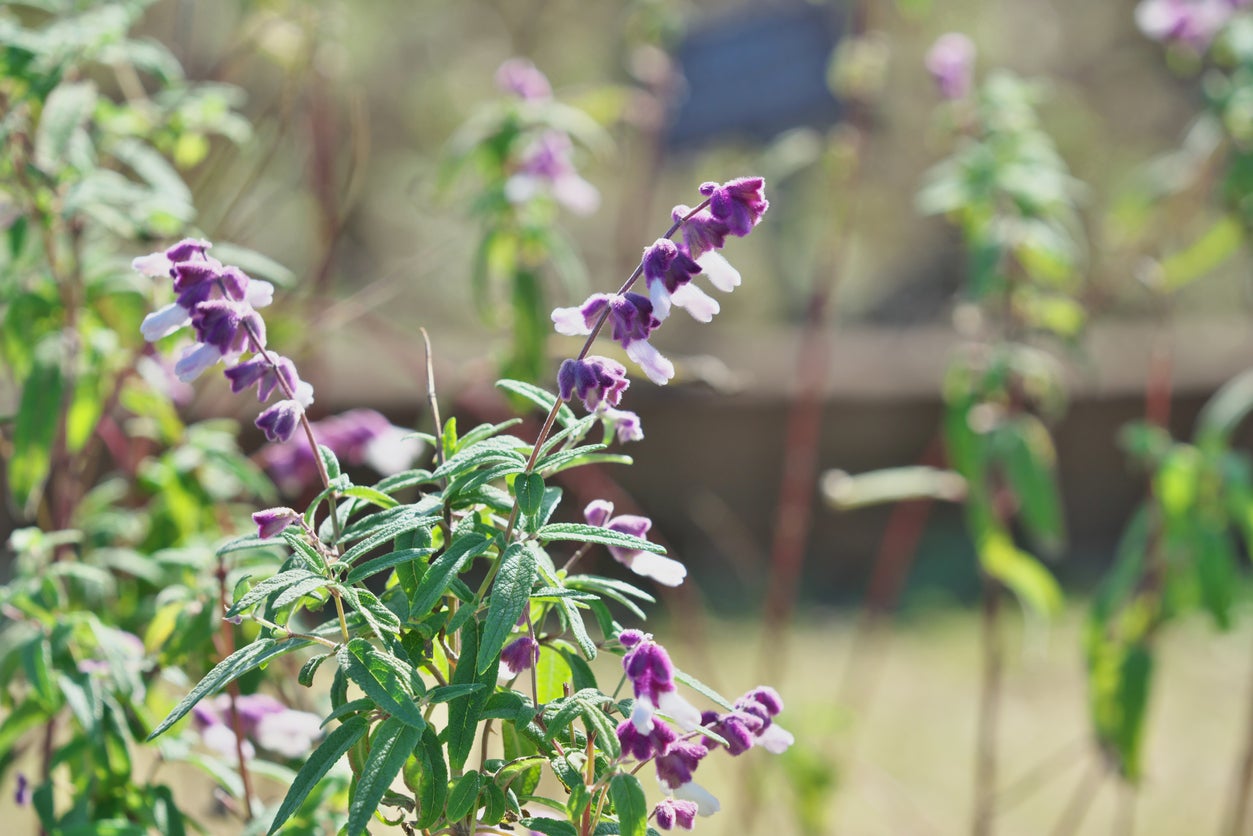Mexican Bush Sage Care: How To Plant Mexican Bush Sage


For many flower gardeners, attracting pollinators, like butterflies and hummingbirds, is a top priority. Choosing flowering plants that encourage diversity of wildlife in the garden is a key aspect of creating a lush, green garden oasis. Mexican bush sage plant is an ideal choice for those wishing to establish perennial plantings that will thrive all season long.
How to Plant Mexican Bush Sage
Mexican bush sage plant (Salvia leucantha) is a perennial flowering plant with unique greenish silver foliage. Hardy to USDA zones 7b to 10, bush sage can also be grown as an annual in regions outside of its hardiness range. Though they can reach sizes up to 4 feet (1 m.) in both height and width in native growing zones, these plants will be much smaller when grown as an annual.
Regardless, flower gardeners will be rewarded with vibrant red-purple flowers in late summer and early fall.
Learning how and when to plant Mexican bush sage is relatively simple. Plantings can be made throughout the growing season; however, early spring is often the best time.
Gardeners can begin the process of growing Mexican bush sage in a wide variety of ways. These methods include seed, cuttings, or transplants. Finding Mexican bush sage plants in garden centers may be difficult, depending on the growing zone. Purchasing the plants from a reputable source will be important to ensure that new plantings in the garden are healthy and disease free.
Mexican Bush Sage Care
Beyond planting, Mexican bush sage requires little care. To plant, choose a well-draining location that receives full sun. The soil should be nutrient-rich and maintain balanced moisture levels throughout the growing season.
Like many other salvias, Mexican bush sage does well in waterwise and xeriscape plantings. Though this plant will tolerate some periods of drought, it is best to establish a consistent irrigation routine. As the plant grows, it may become tall or leggy. This can be remedied by trimming back the plant throughout the summer as needed. In doing so, never remove more than one-third of the plant at a time.
Sign up for the Gardening Know How newsletter today and receive a free copy of our e-book "How to Grow Delicious Tomatoes".
Hard pruning can be done at the end of the season after all blooming has ceased. This will help to prepare the plant for winter and encourage new growth in the following spring.

Tonya Barnett has been gardening for 13 years. Flowers are her passion. She has transformed her backyard into a cut flower garden, which she regularly chronicles on her YouTube channel http://www.youtube.com/@tonyawiththeflowers.